Safety Limit Switch
• Conforms to EN (TUV) standards corresponding to the CE marking
• Positive opening operation of NC (Normally Closed) contacts conforming to IEC /EN 60947-5-1 Double
• Double insulation makes ground terminal unnecessary (Bears marking)
• Wide standard operating temperature range: -25°C to 80°C
• Full range of actuator heads and levers suitable for safety applications
• Sealing up to IP 67
• Wide switch variations, (Snap action and slow action basic switches)
• International conduit size
The EP series safety limit switches conform to EN 50047 and have been developed to provide a range of options including plastic cases in various sizes, a choice of snap acting, slow break/make with 2 contact configurations and a choice of actuator heads. The EP series offers the option of rotating the head in 90° increments before installation to allow ease of mounting. Highly limit switches can be used in other applications other than guard doors, for example on moving machine beds, crane arms,lifts, elevators, etc.
Operation of these limit switches is achieved by the sliding action of the guard or other moving object deflecting the plunger or lever. For safety applications it is important that upon actuation, the guard or other moving objects should not pass completely over the switch and allow the plunger or lever to return to its original position.
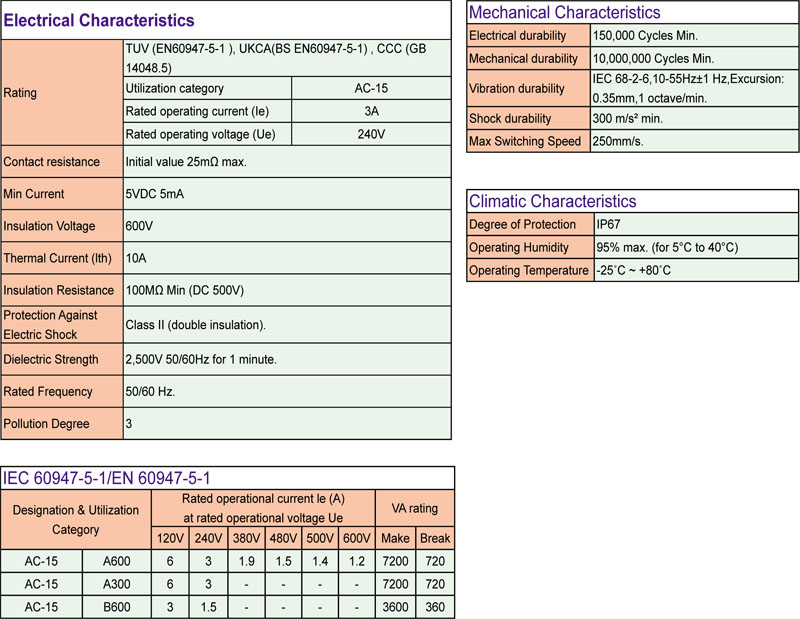
> Product Selection

| Actuator Type EP-□-□-20 Roller Arm |
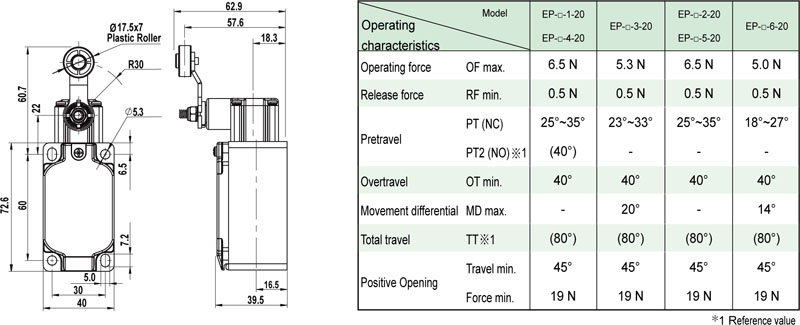
| Actuator Type EP-□-□-21 Adjustable Roller |
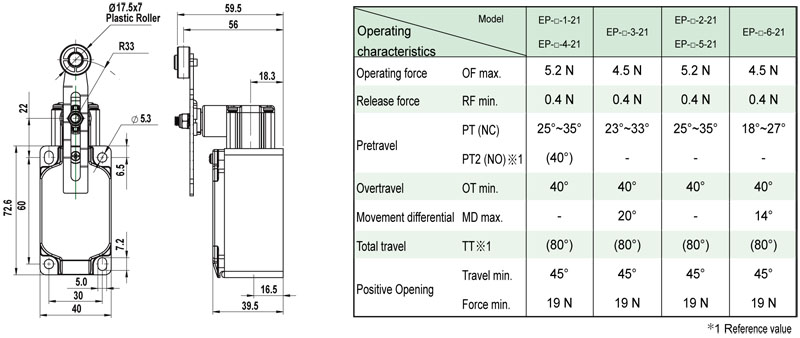
| Actuator Type EP-□-□-31 Push Plunger |

| Actuator Type EP-□-□-32 Roller Plunger |
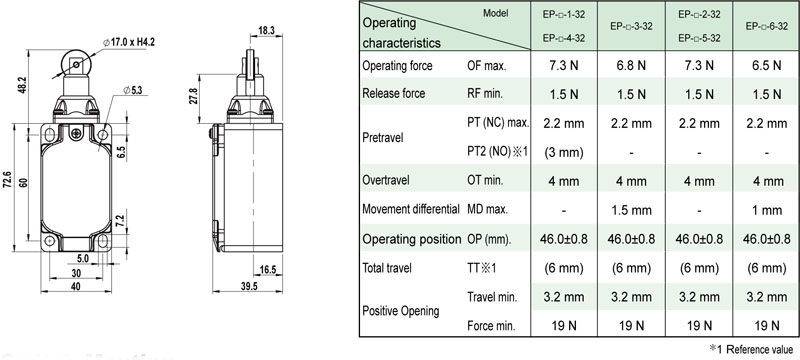
> Switch Mouting
1. Using M5 mounting screws with plane washers or spring washers to secure a tight mounting.Tightening the screws with the torque of 0.5N to 0.7 Nm.
2. Make sure that the dog contacts the actuator at a right angle.Applying a load to the switch actuator (roller) on a slant may result in deformation or damage of the actuator or rotary shaft.
3. Operation of the switch should avoid bearing oblique force, as this may lead to structural damage to the switch.
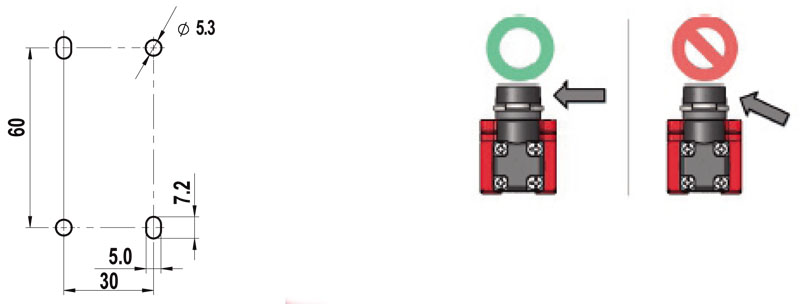
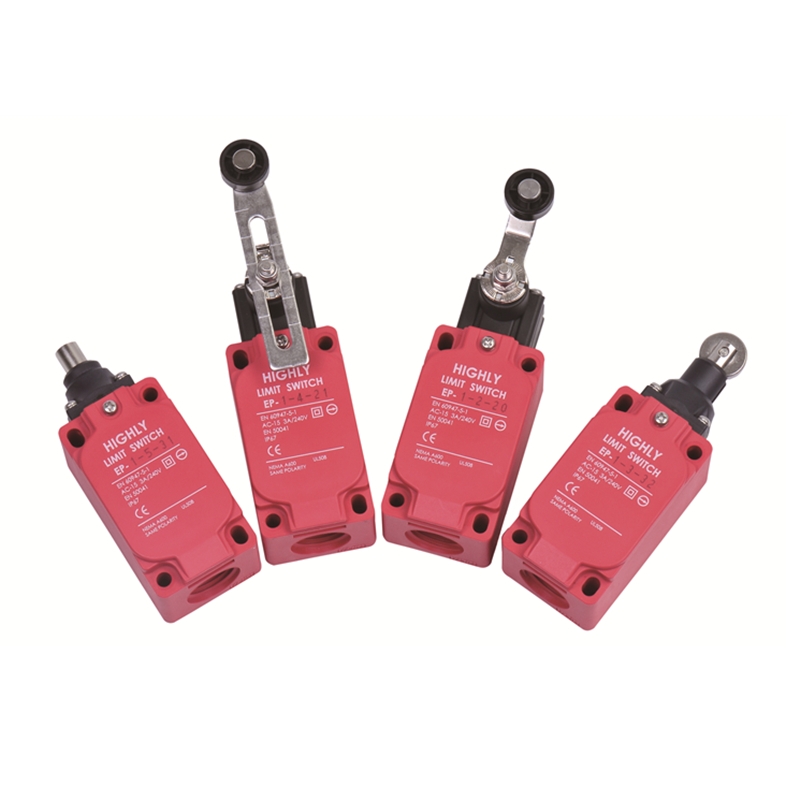
 Download
Download